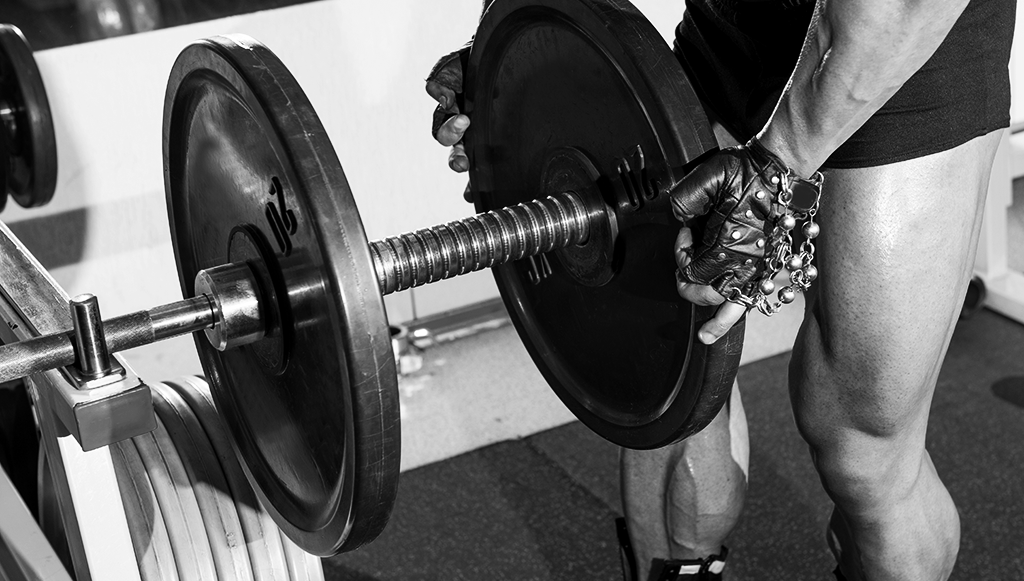
You don't go to the gym to slow the effects of aging. You don't go to the gym to tone up or get lean. You don't even train for fancy looking muscle, although that is a side effect you can live with. No, you train each week with the sole goal of growing stronger. Strength is what matters, and moving more weight on the bench press, deadlift, and squats is what drives you. A new year is upon us, and your powerlifting training could no doubt use a shot in the arm. Let's check out some tips you can use to skyrocket your powerlifting!
Stop Underachieving on Raw Strength
All too often, lifters put the cart before the horse when it comes to building up strength. They read into fancy training methodologies, they try advanced workout to fool their muscles, they over-think things… before they're achieved that basic foundation of muscle that all lifters require in order to maximize their muscle building potential. This is no fault of their own. Most lifters don’t know where their natural ceilings lie, and are likely to promote their self-diagnosed status to advanced after only months or a few years of lifting. As a result, they stop hitting the basics and elevate themselves to 'finishing' strength movements, as opposed to plugging away with the heavy basics.
Start by recording your strength levels at the heavy basic compound lifts of bench press, deadlift, and squat. Set goals of 10 to 20% improvement in these lifts each year. Add small amounts of weight to the bar each week and most importantly, RECORD your results each week. You aren't going to grow stronger by using the same amount of weight each week, and you won't grow stronger by just randomly adding 30 pounds to the bar when you feel like it. Create a method to your madness!

Give it time. Don't be so fast to change up an existing workout, if it is still yielding results. Many powerlifters feel the need to continually keep their body guessing. This is great, once you reach a plateau. However, if you're still seeing gains on a regular basis, there is no need to change things up radically. Stay on your course until the strength gains subside. Then you can get fancy. Heavy lifting using the basic lifts, along with some support movements for those body parts, are what yield great gains. Stick with the basics until you're in the 300 bench press, 400 squat, and 500 deadlift club.
Revisit the Core
First off, you need to focus more attention upon training your core. So often, we as lifters focus upon the specific muscle groups we interpret as responsible for moving the weight in any given lift. We train our chest, then triceps, then shoulders, when we want to make significant gains in our bench press. We train quads and hamstrings when we wish to boost our squat numbers. And of course, it's back, biceps and forearm focus when adding deadlifting numbers to the stack is the goal. However, we often overlook the core of our body, which plays a great role in generating the force, leverage, power and balance needed to move more weight in these main lifts.
Build a strong core, and you will place your body in a state of strength and safety during the lifts. Your hips, truck, and spine will contribute to the lift, and not be a detriment to it. Breath using a methodical, slow method. Planking and other CrossFit movements come into play as well. Put them to work!

Look at your GriThanks to your insanely intense training, devout dieting, and rigorous recovery effort, your body is able to generate a great deal of force and torque. Doing so allows your body, even if you weigh below 200 pounds, to move 300, 400, 500 pounds, or more, on a regular basis. However, as we all know too well, a chain is only as strong as its weakest link. On most lifts such as the deadlift or bench press, the grip, or ability to hold onto the bar, is usually the weak point which gives out before the muscles fail. This means you are underachieving in your workouts.
To solve this is easy - build up your grip strength! Forearm exercises such as wrist curls, reverse wrist curls, and hammer/Zottman curls are great for building up the strength of the forearms. Many gyms also offer various wrist devices, and you can purchase them online at very good prices as well. The stronger your grip, the healthier your shoulders will be as well. Stability in that region can help you to avoid many common shoulder injuries, including those to the AC and RC joints.

New training methodologies have found great success in using kettlebells to build up grip strength. Of course, a 5 pound bucket filled with sand or uncooked rice can also fit the bill! Your strength and endurance will increase, and at the end of the day, you'll be more capable and competent in the core lifts you are working so hard to improve.
It doesn't take a lot to improve your powerlifting capabilities. Train longer and harder, strengthen your core, and don't allow for a weak grip. The rest just involves lots of patience. Good luck!


